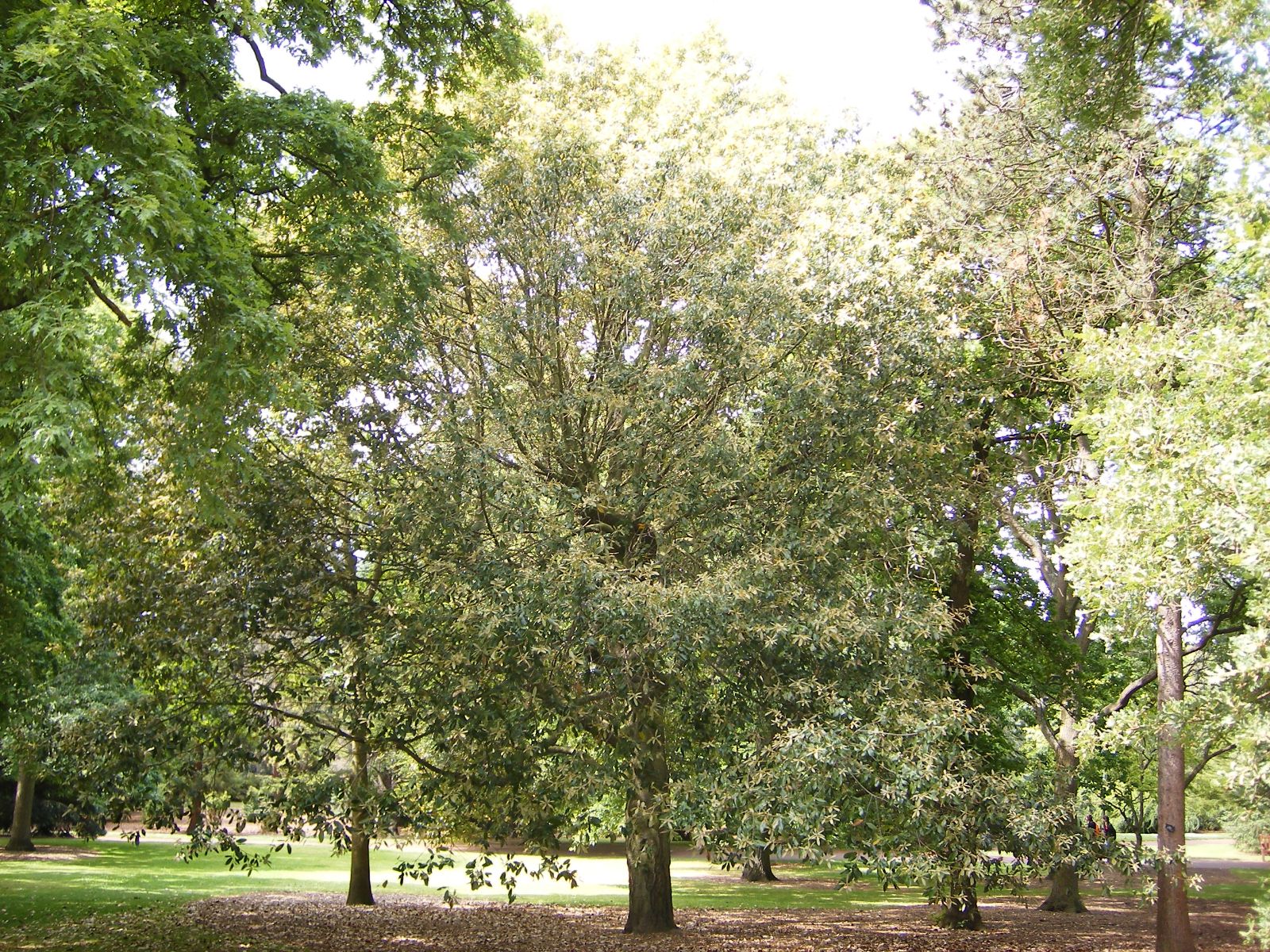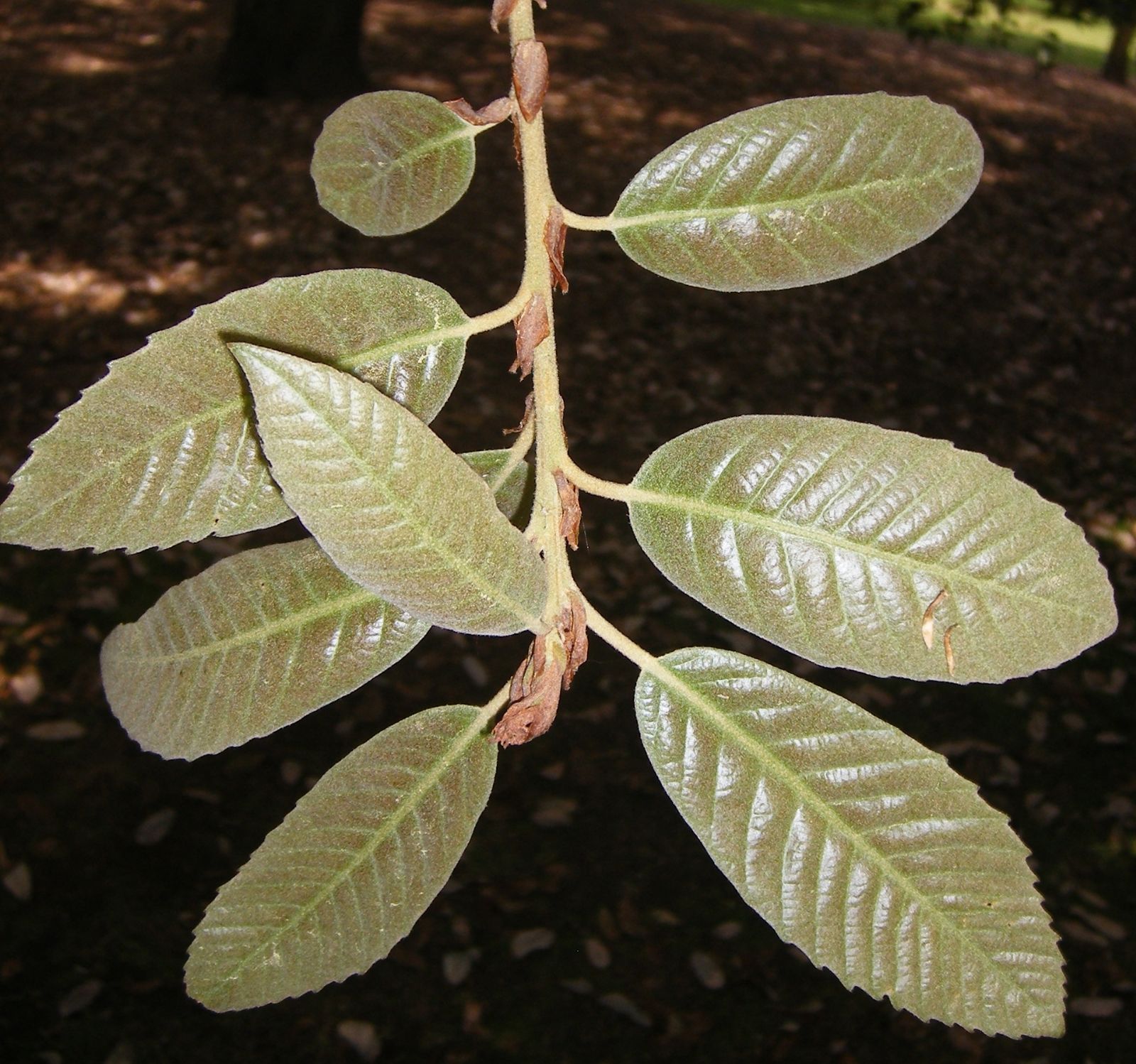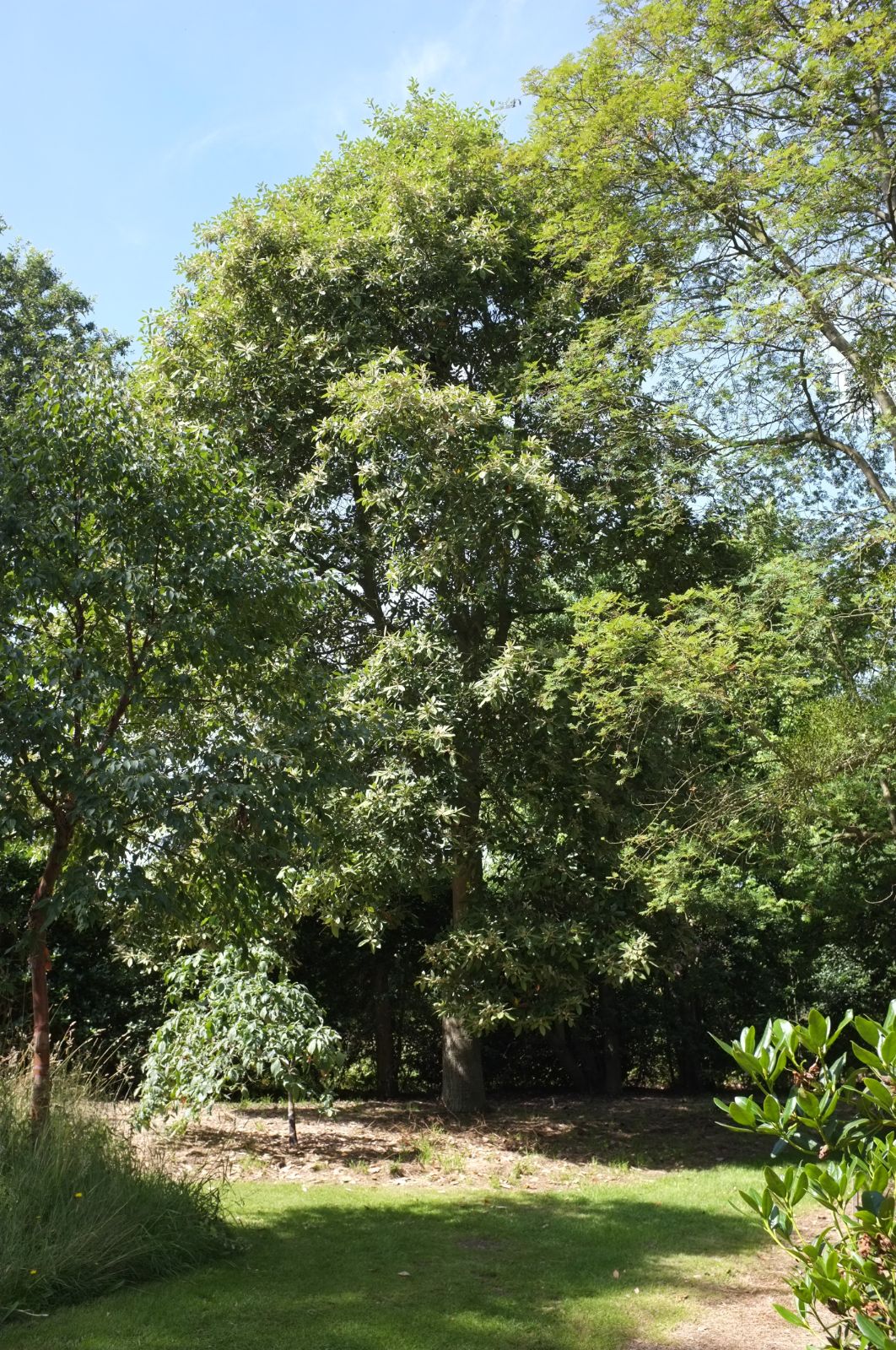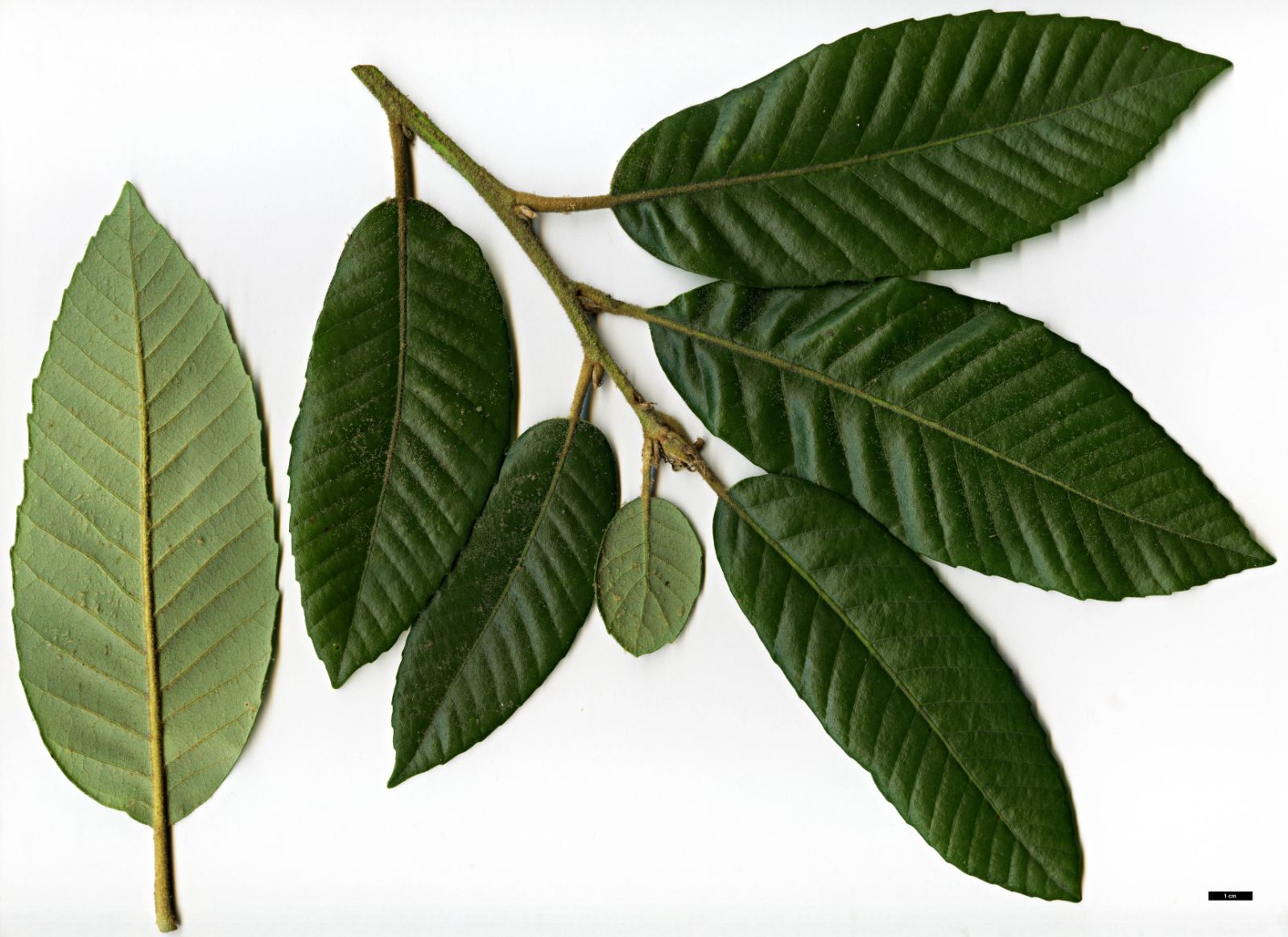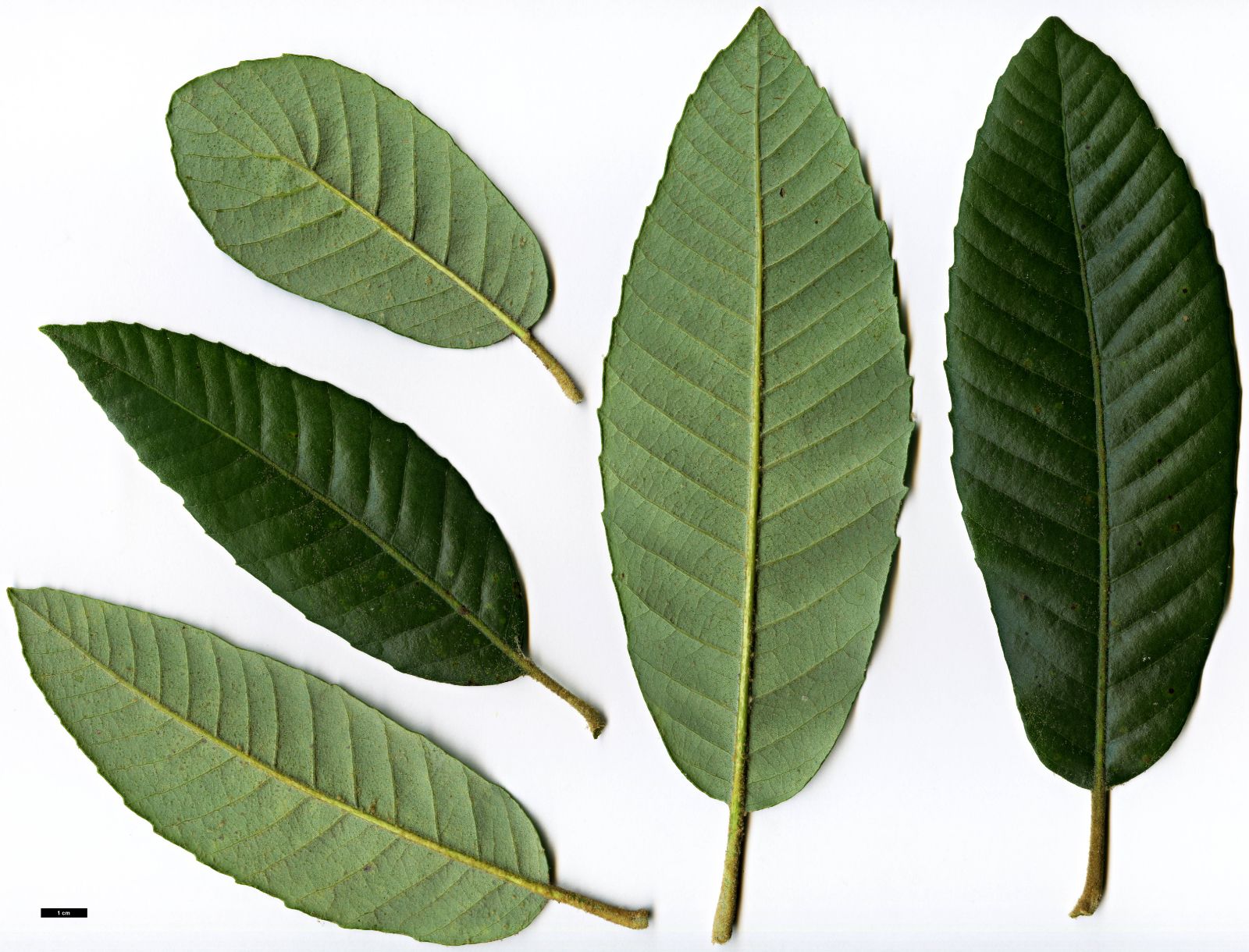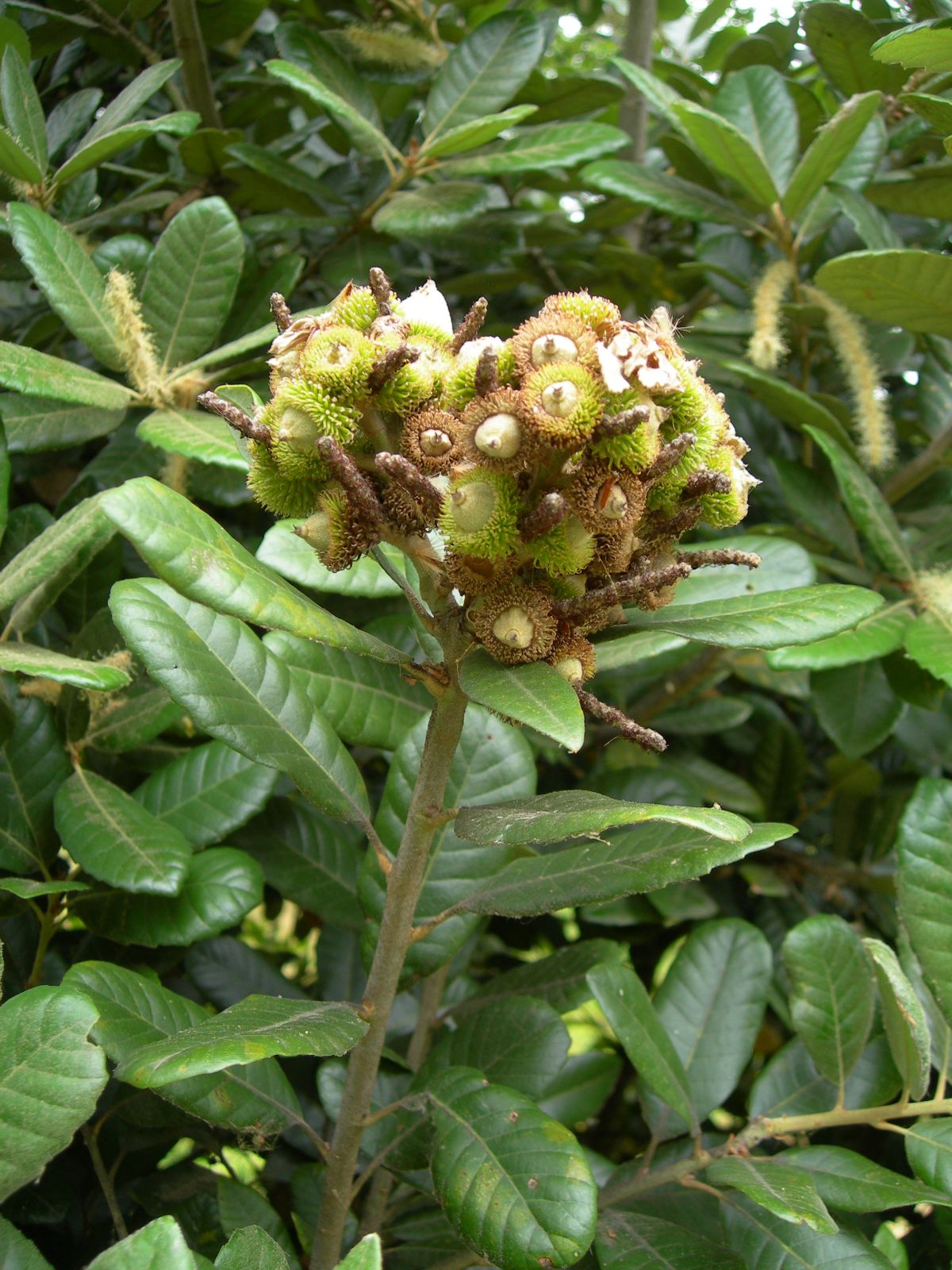Lithocarpus densiflorus
Credits
Article from Bean's Trees and Shrubs Hardy in the British Isles
Recommended citation
'Lithocarpus densiflorus' from the website Trees and Shrubs Online (treesandshrubsonline.
Genus
Common Names
- Tanbark Oak
Synonyms
- Quercus densiflora Hook. & Arn.
- Pasania densiflora (Hook. & Arn.) Oerst.
An evergreen tree 70 ft or more high, in a young state pyramidal; young shoots clothed with a thick pale wool which persists through the second season. Leaves stiff and leathery, oval or oblong, rounded or broadly tapered at the base, pointed, twelve to fourteen parallel ribs on either side the midrib, each rib ending in a sharp tooth, 2 to 4 (occasionally 6) in. long, 7⁄8 to 21⁄4 in. wide; upper surface at first covered with loose, stellate down which falls away by the end of the season, leaving it dark glossy green, lower surface with a thick down, at first pure white, becoming tawny and ultimately falling away, leaving it grey, glaucous, and nearly glabrous; stalk 1⁄3 to 3⁄4 in. long. The leaves remain on the tree for two or three years. Male flowers in erect, slender spikes, 2 to 4 in. long. Acorns solitary or in pairs, 3⁄4 to 1 in. long; the cup shallow, covered with slender, downy, reflexed scales.
Native of California and Oregon; introduced in 1874 to Kew, where it has proved a perfectly hardy and very striking oak. The milk-white down which covers the young leaves of the new shoots is very effective, and with the strong parallel ribs renders the species quite distinct from all other evergreen oaks. It is becoming rare in the wild through being cut down for its bark, which is exceedingly rich in tannin.
There is an example at Kew in the Oak collection, pl. 1923, which measures 29 × 11⁄2 ft (1965). A tree of about the same height grows at Exbury, Hants.
From the Supplement (Vol. V)
specimens: Kew, 56 × 31⁄4 ft (1984); Edinburgh Botanic Garden, 31 × 41⁄4 ft (1985).
var. echinoides (R. Br.) Abrams
Synonyms
Q. echinoides R. Br

